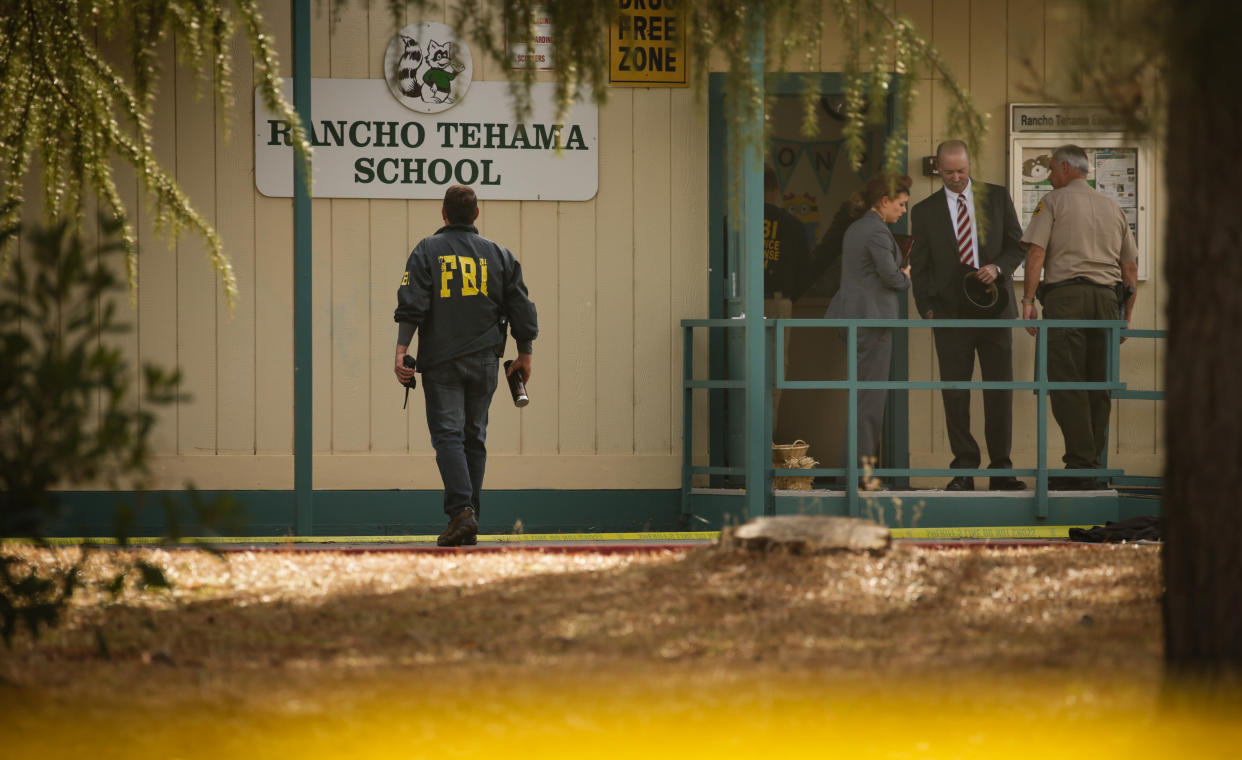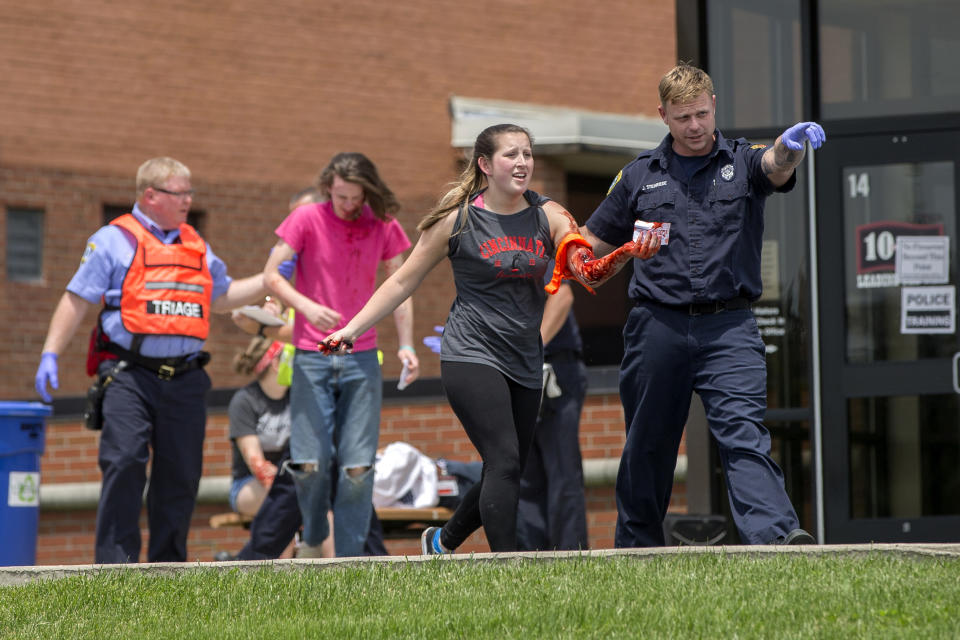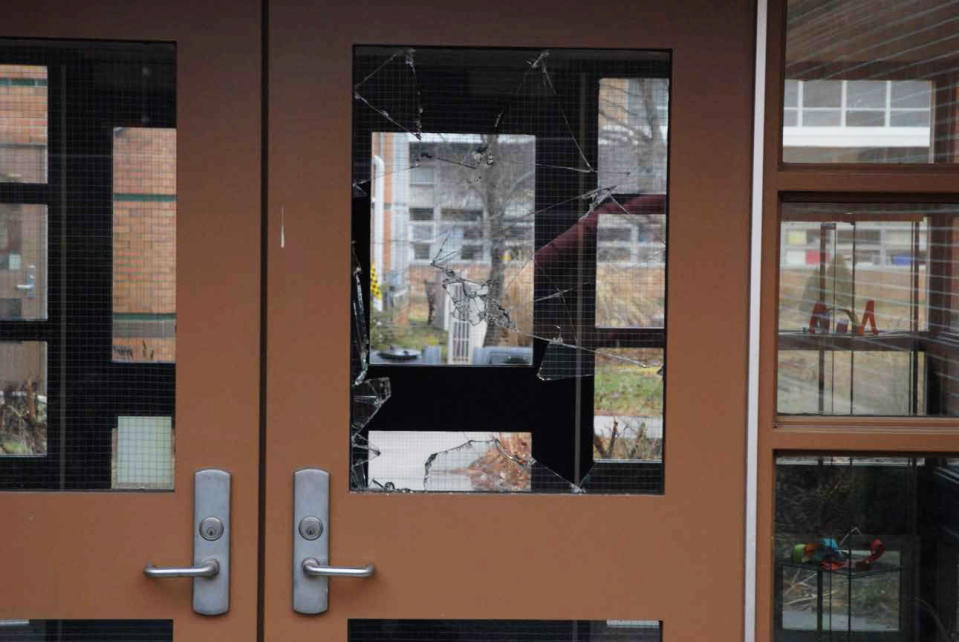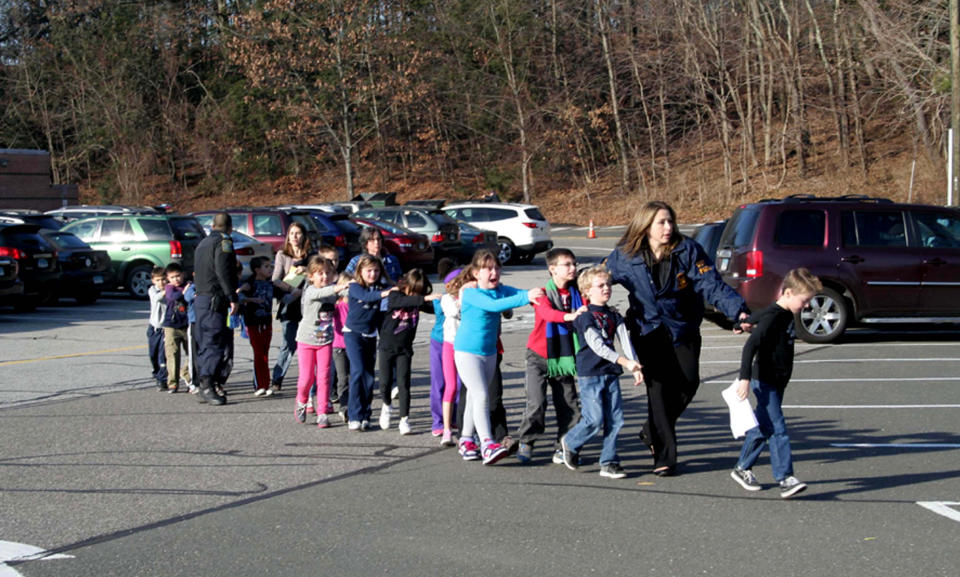'Lockdown!': How lessons from Sandy Hook saved lives in California shooting

It was five years ago that a young man invaded Sandy Hook Elementary School in Newtown, Conn., and shot and killed 20 young children and six staff members, a tragedy that indelibly scarred that small city and lives on in the collective national memory. But school shootings didn’t begin, or end, with Sandy Hook. Yahoo News looks at the aftermath of four of these tragedies and the lives they changed. In this story, we examine how the lessons learned at Sandy Hook may have helped save lives at a California school just last month. In other stories, we examine how 20 years on, Jonesboro, Ark., is still traumatized by an attack carried out by two middle-school boys — and how survivors deal with the knowledge that the killers are now grown men and free from prison; and at how the parents of a girl killed in Newtown are coping with their loss.
_____
The crackle of distant gunfire occasionally comes with the territory in rural Tehama County, Calif., two hours north of Sacramento.
But the shots that rattled school secretary Sara Lobdell the week before Thanksgiving weren’t routine.
“They were too close and too real,” said Lobdell, who was greeting students outside Rancho Tehama Elementary School when the first shot pierced the cool morning air.
Lobdell bolted back into her office and grabbed the intercom.
“Lockdown!” she yelled.
The first bell of the day was still minutes away, so many of the school’s 100 students and nine employees were scattered about. A teacher watching students in the schoolyard also heard shots coming closer.
“Lockdown!” the teacher shouted into a walkie-talkie.
“Lockdown!” Lobdell radioed back.

Related slideshow: Paducah, Jonesboro, Columbine and Newtown: A chain of tragedy and grief >>>
Staff finished corralling students into their classrooms and parents into the office about 10 seconds before the shooter — armed with a semiautomatic rifle and two handguns — stormed into the quad.
Lobdell hid under her desk not knowing if her own two sons had found refuge.
“I was hoping and praying that they were safe and following what they were told to do,” she said, choking back tears.
The gunman, clad in a military-style vest, sprayed bullets at the school’s walls and windows. Unable to breach the locked classroom doors, the suspect, identified by police as 44-year-old Kevin Janson Neal, fled the scene after exchanging fire with police and later shot himself to death, according to authorities.
Police say Neal killed five adults, including his wife, during his rampage. One child was shot while sheltering at the school but survived.
Authorities say Lobdell saved Rancho Tehama from being the scene of the nation’s latest Sandy Hook, Columbine or Jonesboro. Lobdell credits the school’s lockdown plan.
“Practice, practice, practice,” she told Yahoo News of the Nov. 14 shooting spree. “Practice doing the drills and ensuring that the kids do in fact listen. What was amazing was that there was not a question from any child — they did exactly as they were told and instructed.”
While Rancho Tehama’s hasty lockdown is being heralded, there are questions about the status of active shooter plans in other schools across the country.

Related slideshow: Images from Newtown >>>
Five years after 20 children and six adults were fatally shot at Sandy Hook Elementary School in Newtown, Conn., many of the public schools that house 50 million pupils and six million adults daily continue to grapple with preparing for a potential mass shooting:
How to conduct drills without sensationalizing violence or alarming children?
Should uniformed officers patrol the hallways?
Do we fortify already-aging schools with high-tech surveillance gadgets?
Who funds what?
“It can be really dizzying for communities looking at what’s out there in the school safety world,” said safety advocate Michele Gay, whose 7-year-old daughter, Josephine Grace, died at Sandy Hook.
Even some experts disagree on what to do in the heat of the moment. Federal guidelines published six months after Sandy Hook instruct adults to fight an attacker as a last resort, but the FBI and U.S. Department of Education differed on whether children should be taught the same.
The 75-page guideline for school emergency preparedness was produced jointly by six federal agencies in response to President Obama’s request for a plan to curb gun violence. But with the guide completed, no one agency or office was given direct responsibility for overseeing implementation, according to a March 2016 report by the Government Accountability Office.

“GAO found gaps in coordination that suggest recent efforts are insufficient: not all relevant agencies and officials are included in collaborative efforts or are aware of related efforts and resources, and agencies are offering different interpretations of the same federal guidance—all of which risks wasting limited federal resources on duplicative, overlapping, or fragmented efforts,” federal auditors wrote.
Meanwhile, a GAO survey of 50 states and the District of Columbia found that less than half reported having mandates for schools and districts to carry out active shooter drills.
Rick Fitzgerald, the superintendent in Corning Union Elementary School District, which includes Rancho Tehama, said California schools are required to have a lockdown plan and conduct drills in coordination with local law enforcement.
“We have been doing lockdown drills for years,” Fitzgerald told Yahoo News. “The attention to detail and process was more finely focused as a direct result of Sandy Hook.”
That’s comforting news to safety advocate Gay and to Alissa Parker, mother of Sandy Hook victim Emilie Parker. After the Dec. 14, 2012, deaths of their daughters, they co-founded Safe and Sound Schools: A Sandy Hook Initiative, a nonprofit with a comprehensive approach to ending school violence.
“I saw that day that there were so many things that we could have done a little bit differently,” said Gay, whose daughter’s birthday party was set for the next day. “I just couldn’t not share what we learned with others.”

The front doors of Sandy Hook were locked, but 20-year-old Adam Lanza gained access by shooting out the glass. His violent entry got the attention of the nation’s schools, thousands of which have added laminate or impact-resistant film to make windows harder to break.
“If they work on it long enough they’ll get through, but the idea is that it buys you time,” said Pete Blair, a criminal justice professor and the executive director of the Advanced Law Enforcement Rapid Response Training (ALERRT) Center at Texas State University.
The Sandy Hook massacre involved the shooter barging in to two first-grade classrooms. Those doors could be locked, but only from the outside.
“The way that we had practiced our lockdown would be that the teacher would keep the key in an emergency folder,” Gay said. “It was an impossibility. They all did a phenomenal job with what they had in those moments.”
These days, schools are not only making it easier for teachers to lock doors but many are also instructing them on breaking windows as a means of escape. Some newly constructed schools are adding second exits to classrooms.
“You need multiple options,” Blair said. “You can’t say that the only option we’re going to have is this one.”
For all the lockdown drills and advances in technology, Gay said the most important change since her daughter’s death has been a shift in the conversation and a more collaborative approach to planning.
“We can no longer play the denial card, if you will,” she said. “We can’t afford to underutilize one group; we can’t afford to leave out one perspective.”

One perspective now being given more consideration is the psychological impact on survivors, symbolized by a widely seen photo from that hellish day five years ago showing Sandy Hook children walking away from the bullet-riddled building. They are in a line, hands to shoulders, and their eyes are closed.
“A first responder trained in such a different way was already thinking about mitigating the traumatic effect of those sights for the children and the teachers,” Gay said. That, she said, is a lesson schools across the country are incorporating into their own plans.



